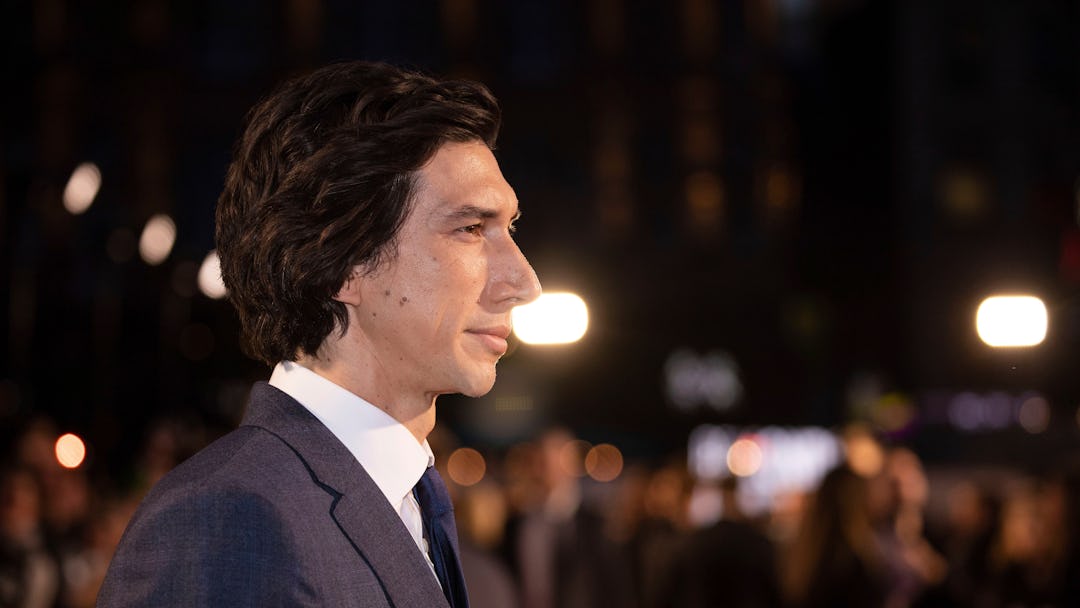It’s weird to see the actor Adam Driver wearing a shirt on the cover of the September issue of GQ. The man who plays Girls‘ topless, brutal, physically imposing weirdo alcoholic — a character who does physical labor when he isn’t acting on Broadway — has “made it,” turning from jolie laide oddity to hot commodity.
In the interview, writer Jessica Pressler talks about how Driver augurs a new sense of authenticity in the male actor:
It’s hard to say what was most compelling about him: perhaps his face, with all of its different planes, like a carving from Easter Island. Or maybe his incongruously muscular body, which seemed to contain equal amounts of twitchy intensity and feral grace. Or it could be the way he spoke, forcefully but always with a tremulous undercurrent of feeling that somehow made him endearing, even as he barked out fantasies to Dunham’s character while having sex…
What Driver has is hard to quantify. He is not much to look at initially, but he has a physical intensity on the screen that’s uncommon in male actors today. Part of it is that he’s lumbering as a person, but for an actor, he’s a superior physical specimen, at a whopping 6’3″. He also has a back story that gives his performances something more than mere line readings. He was a Marine. He went to Juilliard. It’s as if Dustin Hoffman had the body of an Australian superhero.
There are very few American actors in their 20s who have the classical training and the physicality that rivals the likes of a Daniel Day-Lewis, who was clearly delighted by Driver’s tiny presence in Lincoln, while also going toe-to-toe with the legions of Australian actors who are getting star-making roles as superheroes and love interests of YA heroines. Compared to the Hemsworth family, even your Joseph Gordon-Levitts look like little pischers (then again, Gordon-Levitt wrote and directed Don Jon, a film where his sweet millennial beta-male charm is nearly lost in a role where he is basically playing a fictional version of Jersey Shore‘s “The Situation.” It’s weird.).
As a New York Times Magazine article explained earlier this year, most aspiring actors living in America these days are working on bulking up for the sake of a potential superhero role — the sort that doesn’t lead to a nuanced career or depend on anything like a personality. (A notable exception would be young black actors like Michael B. Jordan, who has an upcoming role in The Fantastic Four reboot. But we rarely see them on the covers of magazines, which is racist and limits what masculinity is in America and it’s, above all, boring. It would be nice to see Anthony Mackie as Captain America, wouldn’t it?)
When it comes to American actors in the younger cohort who feel like men, not boys, the most visible specimen is the ever-charming Channing Tatum (and his appeal isn’t exactly versatility, but a sort of foxy outwitting of our low expectations). Driver provides another opportunity for something like manliness on screen. Lately it feels like most actors have been working since they were ten years old, or 18, or for long enough that their face betrays nothing of having lived a human life. It’s why breakthroughs like Tatum, Driver, or even a Jessica Chastain feel so refreshing — these people lived lives before they became actors. They have a sense of being a person outside of the role, which is a valuable thing.
Credit should go, too, to Driver’s performance as Adam on Girls — in another actor’s hands, he would’ve seemed obviously slimy, a total creep. His lurking, sweaty Stanley-yelling-“Stella!”-in-A-Streetcar-Named-Desire physicality took the character to another level; you got why Lena Dunham’s Hannah Horvath was attracted to him, but that space and size could also prove frightening at times (namely, Season 2’s disturbing sexual encounter in “On All Fours,” which spurred endless debates over whether it was rape). Driver has a presence that is wonderfully dissonant with Girls‘ hipster world, where people are mostly short, slight, and ever-so-polite, so it makes sense that Hollywood took notice.
(In this year’s SXSW keynote address, Dunham pointed out, correctly, that while Hollywood has embraced Driver, the industry is still typecasting the show’s female stars in roles limited by the characters that they play on her show — which is sexism in action.)
In a lot of ways, Driver reminds me of Michael Shannon. But unlike Shannon, doomed to oscillating between onscreen villainy and intriguing theater work, Driver is young enough to get some interesting roles. Because of his presence, his space-oddity intonations and ability to come at a line, and his past as a person, he seems like a new man on screen. There’s a danger to Driver that other actors don’t have, and that danger and that surprise can create a certain wooziness on camera. It’s something like pheromones. It doesn’t quite extend to his public persona, which is charming, doomy about the world, and committed to making some sort of difference.
In the GQ piece, This Is Where I Leave You director Shawn Levy intones: “But ‘this kid,’ [he] says, with mark-my-words import, ‘is going to be one of the most formidable actors of his generation.'” You can see how it’s possible, how one too-large weirdo from Girls could go on to dominate a variety of roles as a total wild card. Most actors are boring, and cinema’s go-to wild cards are mostly middle-aged or older. Driver seems like he could be something new.
